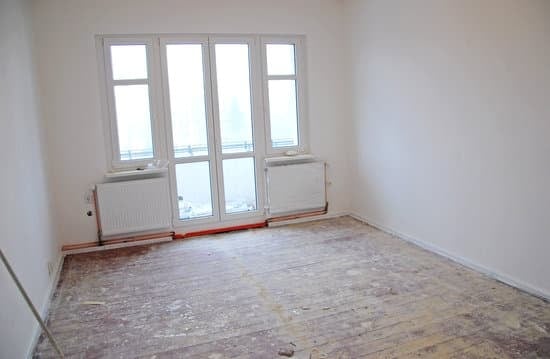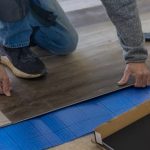Having a home theater can be a great way to bring the cinematic experience into your own living space. But one crucial aspect that often gets overlooked is the acoustics of the room. In this article, we will explore how to improve acoustics in a home theater, covering everything from room layout and speaker selection to sound absorption techniques and troubleshooting common acoustic issues.
The impact of good acoustics on the overall movie-watching experience cannot be overstated. Clear, immersive sound can make a huge difference in how you perceive and enjoy a film, elevating the viewing experience to another level. This section will delve into the importance of acoustics in creating a truly captivating home theater setup.
Understanding the layout and design of your home theater is essential for achieving optimal acoustics. Factors such as room size, shape, and materials can significantly impact sound quality. Additionally, selecting the right location within your home can also play a key role in creating an ideal acoustic environment for your home theater. We’ll discuss these aspects in detail and provide tips for making informed decisions when setting up your home theater space.
Understanding Room Layout and Design for Optimal Acoustics
When it comes to creating a home theater with exceptional acoustics, the layout and design of the room play a crucial role. The size, shape, and materials used in the construction of the room can significantly impact the sound quality within the space. Understanding how these factors influence acoustics is essential for achieving optimal audio performance in your home theater.
Impact of Room Size and Shape
The dimensions and shape of a room can have a profound effect on how sound travels within the space. A long, narrow room, for example, may produce unwanted echoes or standing waves that distort the original audio signal. On the other hand, a square room can cause issues with uneven bass response. When designing a home theater, it’s important to consider these factors and aim for a room size and shape that minimizes acoustic issues.
Tips for Choosing the Right Location
Selecting the right location within your home for the home theater is also critical for achieving optimal acoustics. Avoid placing your home theater in an open living area that shares walls with other rooms or has large windows that can create sound reflections or interference. Instead, opt for an enclosed space with limited openings to minimize sound leakage and maximize audio performance.
By carefully considering these factors related to room layout and design, you can create a home theater environment that provides exceptional acoustics for an immersive movie-watching experience. Understanding how to improve acoustics in a home theater starts with making informed decisions about these fundamental aspects of room construction and layout.
Choosing the Right Speakers and Audio Equipment
When it comes to creating the perfect home theater experience, choosing the right speakers and audio equipment is essential for achieving optimal sound quality. The type and placement of speakers can significantly impact the overall acoustics in your home theater, making it crucial to carefully consider these factors.
One important aspect to consider when selecting speakers is the size and layout of your home theater room. Larger rooms may require more powerful speakers or additional subwoofers to fill the space with high-quality sound. Additionally, the shape of the room can affect how sound travels, so it’s important to choose speakers that can effectively distribute audio throughout the space.
In addition to considering room size and layout, it’s also essential to select audio equipment that complements your specific needs and preferences. Factors such as amplification, receiver capabilities, and audio formats should all be taken into account when choosing equipment for your home theater. Whether you prefer a traditional stereo setup or a complex surround sound system, selecting the right audio equipment is crucial for achieving an immersive movie-watching experience.
Another important consideration when choosing speakers and audio equipment is their placement within the home theater. Proper speaker placement can significantly impact sound quality and overall acoustics in the room.
Understanding how different speaker types function and interact with one another can help you create a balanced and immersive listening experience in your home theater. By following these guidelines on how to improve acoustics in a home theater through speaker selection and placement, you can enhance your movie-watching experience and enjoy high-quality sound from the comfort of your own space.
Utilizing Sound Absorption and Diffusion Techniques
When it comes to creating the perfect home theater experience, sound absorption and diffusion techniques play a crucial role in optimizing acoustics. By strategically utilizing these methods, you can significantly enhance the overall audio quality within your home theater space. Here are some effective techniques for improving acoustics in a home theater:
- Acoustic Panels: Installing acoustic panels on the walls of your home theater can help absorb excess sound reflections, resulting in clearer audio and improved overall acoustics. These panels come in various shapes, sizes, and materials, allowing you to customize their placement based on your room’s specific acoustical needs.
- Soundproofing Materials: In addition to acoustic panels, incorporating soundproofing materials such as foam padding or insulation can further reduce unwanted noise and reverberations. This is especially beneficial if your home theater is located in a high-traffic area or near noisy appliances.
- Diffusion Devices: Utilizing diffusers within your home theater space can help disperse sound waves more evenly throughout the room, minimizing harsh reflections and creating a more natural acoustic environment. Diffusers come in various designs, from simple wall-mounted options to freestanding structures that add a decorative element to your space.
By implementing these sound absorption and diffusion techniques, you can effectively minimize unwanted noise and optimize the overall audio quality within your home theater. Taking the time to strategically place acoustic panels, incorporate soundproofing materials, and utilize diffusers will ultimately create an immersive movie-watching experience for you and your guests.
Calibrating and Tuning the Audio System
One of the first steps in calibrating your home theater audio system is to use a sound level meter to ensure that each speaker is outputting sound at the same volume. This is essential for creating a balanced and realistic soundstage. Additionally, adjusting the crossover frequencies on your subwoofer can help prevent any overlap with your main speakers, providing a cleaner and more defined bass response.
Once the speaker levels are properly balanced, it’s important to optimize the audio settings on your amplifier or receiver. Many modern audio systems come with built-in calibration tools that can automatically adjust parameters such as speaker distance, size, and equalization. However, manual fine-tuning may still be necessary to achieve the best sound quality for your specific space and equipment.
Another important aspect of tuning the audio system in a home theater is room correction. Many receivers offer room calibration features that analyze the acoustic properties of the room and make adjustments to optimize sound quality. These features can help compensate for any acoustic anomalies within your space, resulting in more accurate and natural sound reproduction.
When calibrating and tuning your home theater audio system, it’s also important to consider factors such as seating arrangement and room layout. The position of your seating relative to the speakers can have a significant impact on how sound is perceived within the space. By taking these factors into account during the calibration process, you can further enhance the overall acoustics of your home theater.
| Calibration Step | Impact |
|---|---|
| Using a sound level meter | Creates balanced soundstage |
| Adjusting crossover frequencies | Cleaner bass response |
| Room correction feature | Compensates for acoustic anomalies |
Incorporating Bass Traps and Low-Frequency Management
When setting up a home theater, one of the key considerations for achieving optimal acoustics is managing low-frequency sound. Without proper management, low-frequency sound can become boomy or muddy, detracting from the overall audio experience. This section will explore the importance of bass traps and other tools for better low-end sound control in a home theater.
Bass traps are acoustic treatment devices designed to absorb or diffuse low-frequency sound waves, preventing them from lingering in a space and causing unwanted effects such as standing waves or room resonances. These traps are typically placed in corners or along walls where low-frequency energy tends to accumulate. By strategically incorporating bass traps into your home theater design, you can effectively manage low-end sound, resulting in a more balanced and defined audio experience.
In addition to bass traps, there are other tools and techniques for addressing low-frequency management in a home theater. These may include subwoofer placement strategies, room equalization systems, and acoustic treatments specifically designed to target low-frequency issues. With the right combination of tools and methods, it is possible to achieve improved clarity and accuracy in the reproduction of low-end frequencies within your home theater space.
| Key Point | Information |
|---|---|
| Bass Traps | Strategically placed to absorb or diffuse low-frequency sound waves |
| Low-Frequency Management Techniques | Includes subwoofer placement strategies, room equalization systems, and targeted acoustic treatments |
| Improved Clarity and Accuracy | The right combination of tools and methods can result in clearer and more accurate reproduction of low-end frequencies |
Addressing Common Acoustic Issues and Troubleshooting
When it comes to creating the perfect home theater experience, dealing with acoustic issues is a common challenge that many homeowners face. By understanding the common problems and knowing how to troubleshoot them, you can improve the sound quality in your home theater and enjoy a more immersive movie-watching experience. Here are some common acoustic issues and tips for addressing them:
1. Echo and Reverberation: Echo and reverberation can significantly affect the clarity of sound in a home theater. This often occurs in rooms with hard surfaces that reflect sound waves, resulting in a muddled audio experience. To address this issue, consider incorporating sound-absorbing materials such as acoustic panels, heavy curtains, or area rugs into your home theater space. These materials help to reduce echo and reverberation, resulting in clearer audio.
2. Uneven Sound Distribution: In some cases, homeowners may notice that certain areas of the home theater have louder or softer sound compared to others. This can be caused by speaker placement or room layout.
To troubleshoot uneven sound distribution, try repositioning your speakers to ensure that they are evenly distributed throughout the room. Additionally, consider using room correction software or an audio calibration tool to fine-tune the sound output from each speaker for a more balanced listening experience.
3. External Noise Interference: External noise from neighboring rooms or outside sources can disrupt the immersive experience in a home theater. To mitigate external noise interference, consider adding soundproofing materials such as acoustic foam or insulation to walls, ceilings, and floors. Additionally, installing solid-core doors and weather-stripping can help minimize noise intrusion from other parts of the house.
By implementing these troubleshooting tips, you can effectively address common acoustic issues in your home theater and enhance the overall audio quality of your movie-watching experience.
The Impact of Furniture and Decor on Acoustics
When designing a home theater, it’s easy to get caught up in the technical aspects of the space such as speakers and audio equipment. However, it’s important not to overlook the impact that furniture and decor can have on acoustics. Properly chosen and placed furniture and decor can significantly enhance the overall sound quality in a home theater.
Role of Furniture and Decor
The furniture and decor in a home theater play a crucial role in either reflecting or absorbing sound. Hard surfaces such as glass tables or bare walls can cause sound to bounce around the room, leading to echo and distortion. On the other hand, soft materials like curtains, upholstered seating, and area rugs can help absorb excess sound, reducing reverberation and creating a more balanced audio experience.
Suggestions for Enhancing Acoustics
When selecting furniture for your home theater, consider opting for items with soft upholstery and plush materials that can help dampen sound reflections. Additionally, incorporating decorative elements like tapestries, wall hangings, and acoustic panels can further contribute to improving acoustics by absorbing excess noise. As for flooring options, choosing carpeting over hardwood or tile can also aid in minimizing sound reflections.
In terms of layout and placement, arranging seating strategically within the room can also impact acoustics. Avoid placing seating too close to reflective surfaces or directly in front of speakers to prevent unwanted reverberations.
Ultimately, paying attention to the role of furniture and decor in managing sound reflections and absorption can greatly contribute to creating an optimal acoustical environment in your home theater. With proper consideration of these factors alongside speaker selection and room design, you can achieve an immersive movie-watching experience with exceptional audio quality.
Conclusion
In conclusion, achieving optimal acoustics in a home theater can greatly enhance the movie-watching experience. By understanding the impact of room layout and design, choosing the right speakers and audio equipment, utilizing sound absorption and diffusion techniques, calibrating and tuning the audio system, incorporating bass traps and low-frequency management, addressing common acoustic issues, and considering the impact of furniture and decor on acoustics, homeowners can create a truly immersive cinematic environment within their own homes.
Taking the time to learn how to improve acoustics in a home theater can make a significant difference in the quality of sound within the space. From selecting the right materials for soundproofing to strategically placing acoustic panels for optimal effect, there are numerous considerations that can contribute to a better acoustic environment.
While troubleshooting common problems with home theater acoustics may be necessary at times, by following best practices and implementing appropriate solutions, homeowners can achieve the desired sound quality for an enjoyable movie-watching experience.
In closing, it is important to emphasize that creating an improved acoustic environment in a home theater is achievable with careful planning and attention to detail. By implementing the tips and techniques outlined in this article, homeowners have the opportunity to create a personalized cinematic experience with superior sound quality. The investment of time and effort into understanding how to improve acoustics in a home theater will ultimately result in an enhanced viewing experience that rivals that of commercial cinemas.
Frequently Asked Questions
What Is One of the Easiest Ways to Improve the Sound in a Home Theater?
One of the easiest ways to improve the sound in a home theater is by adding sound-absorbing materials to the room. This can include thick curtains, rugs, and acoustic panels to reduce echoes and enhance the overall audio experience.
How Can I Improve My Acoustics Sound?
Improving acoustics sound can be achieved by strategically placing furniture or bookshelves around the room to help absorb and diffuse sound waves. Additionally, soundproofing any hard surfaces with acoustic treatments can significantly improve the overall acoustics of a space.
How Do I Optimize My Surround Sound System?
To optimize a surround sound system, make sure to properly calibrate and position the speakers according to the manufacturer’s recommendations. This may involve adjusting speaker angles, distance from walls, and fine-tuning settings for optimal audio performance.

I’m thrilled to have you here as a part of the Remodeling Top community. This is where my journey as an architect and remodeling enthusiast intersects with your passion for transforming houses into dream homes.





